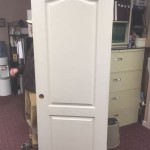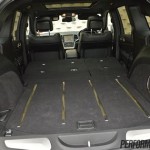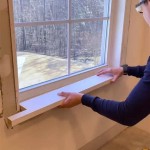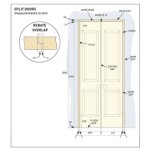How To Clean Auto Interior Plastic
Auto interior plastic components, encompassing dashboards, door panels, consoles, and trim, are consistently exposed to a range of environmental factors, including sunlight, dust, dirt, and spilled liquids. Consequently, these plastic surfaces accumulate grime, lose their original luster, and may even develop discoloration or stains. Regular and proper cleaning is essential to maintain the appearance and longevity of these interior elements. This article provides a comprehensive guide on how to effectively clean auto interior plastic, detailing the necessary tools, cleaning solutions, and techniques.
Before initiating the cleaning process, it is important to gather the appropriate cleaning supplies. Having these items readily available streamlines the process and ensures a thorough and efficient cleaning experience. The essential supplies include:
- Microfiber cloths: These are essential for wiping down surfaces. Their soft texture prevents scratching, and their high absorbency makes them ideal for removing cleaning solutions and grime.
- Soft-bristled brushes: A variety of brushes, including detail brushes and larger scrub brushes, will be needed to tackle different levels of dirt and grime in various areas.
- Interior cleaner: A dedicated interior cleaner is preferable to using harsh chemicals, which can damage the plastic. Ensure the cleaner is formulated for automotive use and compatible with the specific type of plastic in the vehicle's interior.
- Vacuum cleaner with attachments: A vacuum cleaner with a hose and various attachments, such as a crevice tool and a brush attachment, is crucial for removing loose dirt, dust, and debris from crevices and hard-to-reach areas.
- Detail brushes: These small, fine-tipped brushes are essential for cleaning intricate areas such as vents, seams, and around buttons and knobs.
- Spray bottles: Spray bottles are needed to apply the interior cleaner and other cleaning solutions evenly.
- Water: Clean water is required for rinsing and diluting cleaning solutions. Distilled water is preferred to avoid mineral deposits.
- Protective gear: Gloves are recommended to protect the hands from cleaning solutions and grime, and eye protection may be necessary if dealing with harsh chemicals.
Preparation and Preliminary Cleaning
Prior to applying any cleaning solutions, preparing the interior is crucial. This involves removing loose items, such as floor mats, personal belongings, and trash. This allows for unobstructed access to all plastic surfaces and ensures a more thorough cleaning process. Following the removal of loose items, the next step is to vacuum the entire interior. Use the vacuum hose and attachments to remove loose dirt, dust, and debris from the dashboard, door panels, consoles, and other plastic surfaces. Pay close attention to crevices, seams, and hard-to-reach areas where dirt tends to accumulate. The brush attachment will be useful for agitating and lifting dirt from textured surfaces.
For heavily soiled areas, a pre-treatment may be necessary. This involves applying a small amount of interior cleaner directly to the affected area and letting it dwell for a few minutes. This allows the cleaner to penetrate and loosen the dirt and grime, making it easier to remove during the subsequent cleaning steps. However, it is important to test the cleaner in an inconspicuous area first to ensure it does not cause any discoloration or damage to the plastic surface.
Cleaning the Plastic Surfaces
After the preliminary cleaning, the next step is to clean the plastic surfaces with an interior cleaner. Spray the cleaner onto a microfiber cloth, rather than directly onto the plastic surface, to prevent overspray and potential damage to sensitive components such as electronic displays. Gently wipe the plastic surfaces with the damp microfiber cloth, using circular motions to loosen and remove dirt and grime. For textured surfaces, a soft-bristled brush can be used to agitate the dirt and grime trapped within the texture. When using a brush, avoid applying excessive pressure to prevent scratching the plastic.
For intricate areas such as vents, seams, and around buttons and knobs, use detail brushes to reach into tight spaces and remove accumulated dirt and dust. These brushes are designed to be gentle on delicate surfaces, minimizing the risk of damage. For stubborn stains or grime, a slightly more concentrated cleaning solution may be necessary. However, it is important to use caution and avoid using harsh chemicals or abrasive cleaners, which can damage the plastic surface. Instead, opt for a specialized stain remover formulated for automotive interior use.
Once the plastic surfaces have been thoroughly cleaned, it is important to remove any residual cleaner. Use a clean, damp microfiber cloth to wipe down the surfaces and remove any remaining cleaning solution. Follow up with a dry microfiber cloth to buff the surfaces and leave them clean and streak-free. Pay close attention to areas where cleaner may have accumulated, such as around edges and crevices. Leaving cleaner residue on the plastic surfaces can attract dirt and dust, defeating the purpose of the cleaning process.
Protecting and Maintaining Plastic Surfaces
After cleaning, consider applying a plastic protectant to help protect the plastic from future damage and maintain its appearance. Plastic protectants typically contain UV inhibitors that help prevent fading and discoloration caused by sunlight exposure. They also create a protective barrier that repels dirt and dust, making it easier to clean the surfaces in the future. When applying a plastic protectant, follow the manufacturer's instructions carefully. Typically, this involves spraying the protectant onto a microfiber cloth and wiping down the plastic surfaces evenly. Allow the protectant to dry completely before using the vehicle.
To maintain the cleanliness of the auto interior plastic, regular cleaning is essential. A quick wipe-down with a damp microfiber cloth every week or two can prevent dirt and grime from accumulating and make the cleaning process easier in the long run. Avoid eating or drinking in the vehicle to minimize spills and stains. If spills do occur, clean them up immediately to prevent them from setting in and becoming more difficult to remove. Parking the vehicle in a shaded area or using a sunshade can help protect the plastic from sunlight exposure and prevent fading and discoloration.
For deep cleaning and stain removal, it may be necessary to use specialized cleaning products or seek professional detailing services. Professional detailers have the expertise and equipment to tackle even the most challenging cleaning tasks, ensuring that the auto interior plastic is thoroughly cleaned and protected. In certain situations, such as when dealing with severe stains or discoloration, professional cleaning may be the only way to restore the plastic to its original condition.

How To Thoroughly Clean Plastic Surfaces Of Car Interior Detailing Like A Pro Series

How To Clean Your Car Interior Plastics Vinyls

Best Way To Clean Car Interior Plastic Gold Eagle

How To Clean Interior Plastic Autobead

How To Super Clean Your Interior Dashboard Center Console Door Panels Glass
How To Clean Plastic Interior Car Parts Color Glo International

Best Cleaner For Car Interior Plastic Results Mind Blown
How To Clean Dried Mud Off Textured Interior Plastic F150gen14 2024 Ford F 150 Tremor Raptor Forum 14th Gen News Owners Community Discussions

How To Re Your Interior And Keep It Clean Chemical Guys

How To Clean Interior Car Plastic A Step By Guide Compass Vehicle Services Ltd
Related Posts








